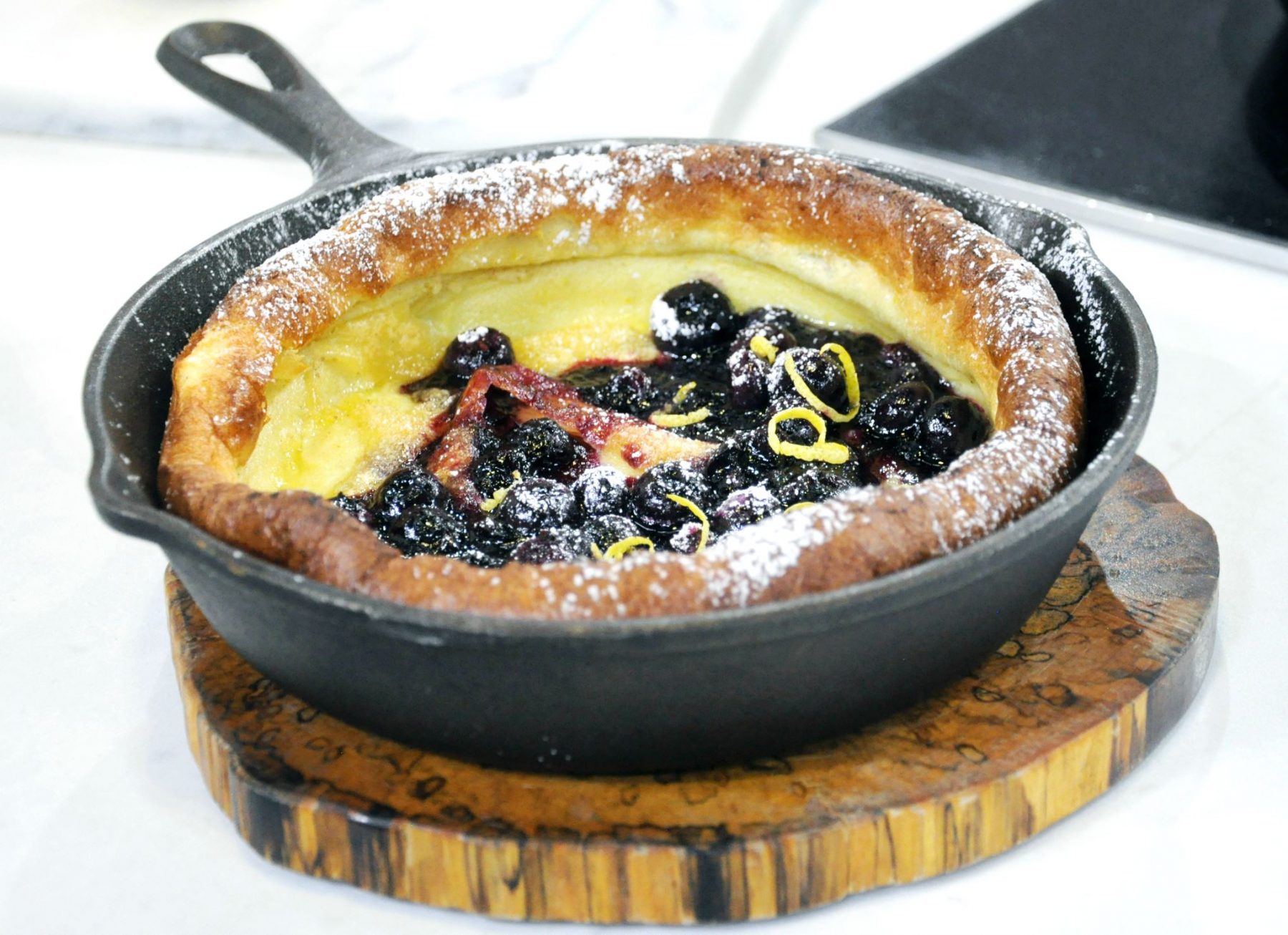Dutch baby pancakes are like a hybrid (or a love child, if you will) of a pancake, a crepe, and a popover — all in one giant skillet.
What Is a Dutch Baby Pancake?
Start with a thin, pancake-like batter and a hot skillet. Pour the batter into the skillet all at once and slide it into a hot oven. Within a few minutes, the batter will start to puff around the edges, rising higher and higher until this “pancake” looks more like a poofy pillow. Once those edges turn golden and you can’t resist the sweet aroma of baked goods any longer, it’s ready.
Out of the oven, the Dutch baby will quickly collapse back into the pan — the steam holding it up quickly evaporates in the cooler air of your kitchen. But no bother — what’s left behind is a pancake with the soft, tender texture of a hot crepe and the eggy flavor of a sweet popover. Slice it into wedges and smear each slice with some jam and maple syrup as you serve it up.
Blended Batter + Hot Oven
- use a blender or food processor to make a very smooth batter with no lumps. Then, rest the batter to give the flour a chance to absorb the liquid, which gives the pancake a better texture and less flour-y flavor. And finally, use a hot skillet to help the pancake puff. You’ll get some crunchy, caramelized edges this way.
- Be sure to use a 9- or 10-inch skillet for making this pancake. The smaller size helps increase the puff and helps the pancake keep its shape. The pan doesn’t have to be cast iron; you can use any oven-safe pan or baking dish of a similar size.
Serving it
- carry the pan to the table, dust it with powdered sugar, and serve it right there. Put a bunch of different toppings on the table and let everyone choose for themselves: Nutella, jams and preserves, lemon curd, peanut butter, maple syrup, fresh fruit, and any other little jars you’d like to use up from the fridge.
- Served on its own, I think this Dutch baby makes a good size for two adults to split.
Ingredients
- 1/2 cup all-purpose flour
- 1/2 cup whole or 2% milk
- 2 large eggs
- 2 tablespoons granulated sugar
- 1 teaspoon vanilla extract
- 1/2 teaspoon fine salt
- 2 tablespoons unsalted butter
- Powdered sugar, maple syrup, and jam, for serving
- Blender or food processor, Spatula, 9- or 10-inch oven-safe skillet
Instructions
- Blend the batter: Place the flour, milk, eggs, sugar, vanilla, and salt in a blender or food processor fitted with the blade attachment. Blend for 10 seconds, scrape down the sides, and then blend for another 10 seconds. The batter will be quite loose and liquidy.
- Rest the batter: Leave the batter in the blender and set aside to rest 20 to 25 minutes. This gives the flour time to absorb the liquid.
- Heat the pan and oven: Meanwhile, place the skillet you’re using on a middle rack to warm along with the oven. Heat the oven to 425°F.
- Melt the butter: When ready to make the pancake, remove the skillet from the oven using oven mitts and place it on top of the stove. Add the butter and swirl the pan to melt the butter and coat the bottom and sides of the pan.
- Add the batter: Pour the batter on top of the butter. Tilt the pan if needed so that the batter runs evenly to all sides. Place the skillet in the oven.
- Bake the Dutch baby: Bake until the Dutch baby is puffed, lightly browned across the top, and darker brown on the sides and edges, 15 to 20 minutes.
- Serve while hot: You can either serve from the pan or transfer the Dutch baby to a serving platter. Dust with powdered sugar. Cut into wedges and serve with maple syrup or jam.
Notes
Fruit-filled Dutch baby: Arrange fruits like blueberries, raspberries, or sliced peaches over the bottom of the skillet and then pour the batter over top.


